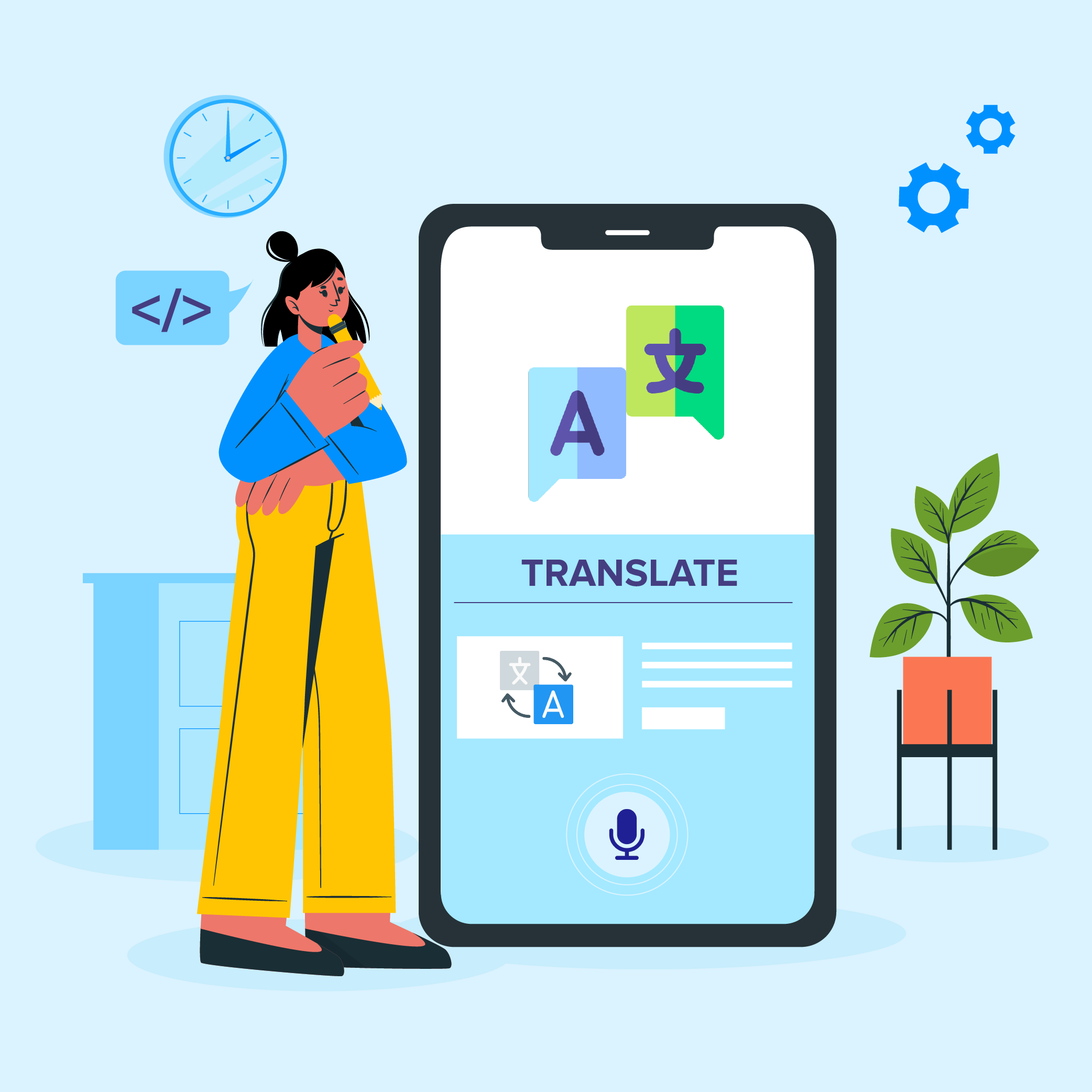Key Challenges Faced in Developing Multilingual Mobile Apps
In today’s global world, businesses are no more restricted to their local area. They are becoming internationally available- reaching every nook and corner of the world. And this is possible because of mobile applications that allow you to connect with anyone on Earth and cater his needs.
When talking about business across the globe, one factor that plays a vital role in the business growth is language. As you are already familiar with the fact that not every person on Earth has English as his native language, it is likely possible that your app fails to serve the non-native English speakers. This can limit your business reach and profits.
“According to Ethnologue 2017 edition published by SIL International, there are only 983 million people who can speak or understand English.”
So, how to deal with this condition? How to entertain the non-native English speakers? The best optimal solution for these questions, as per our experts, is a Multilingual app – the prime most strategy of Mobile App Localization.
Multilingual Mobile Applications
As depicted by the name, multilingual mobile apps are the applications that work in more than one language. The content that is driven by the right mobile app localization strategy allows the businesses to reach more markets and deliver a personalized experience to the customers. It assists in maintaining the transparency and portability. Also, it acts as an aid for a strategic result driven approach to ensure a higher revenue and produce higher ROI.
“Clash of Clans, when localized for the Taiwanese market, became one of the top grossing mobile apps of 2016.”

As almost every brand strives to conduct business to different parts of the world and enjoy its perks, multilingual mobile apps development is in trend!
Challenges Faced in Building Multilingual Apps
The multi-language applications, unlike monolingual mobile apps, are geared to work in different languages along with localization. Thus, they are somewhat different and more challenging to develop. Are you interested to know about those challenges? Here are the major challenges to multilingual application development:
-
Language Translation
Switching from one language to another is not just about translating the words, but to change the etiquette, values and much more. As per the best mobile app development companies, it’s about providing an exemplary experience to the users- from both technical and cultural point of view.
When talking about translation, two mechanisms are adopted, namely Machine Translation and Human Translation. Machine translation refers to the use of software for translating the speech or text from one language to another. The computer experts have introduced various algorithms and rules to provide perfect translations in multiple languages at a faster pace. However, it cannot offer exact outputs as human due to lack of creativity and other related factors. Human translation, on the other hand, means text interpretation done by the experts of targeted language. With this mechanism, you will get exactly the content that rules the mind of the users. However as it is quite tough to find someone proficient at a large number of languages, this translation style is time-consuming and costly.
“Plain language translations are seen as indecent as they might not hold the same sense as the original text had, thereby making the users feel frustrating.”
-
Date & Time
Language interpretations are generally associated with geographical distances, which can eventually result in many other kinds of variations. Be it switching to another time zone or integrate local places, the entire content that you deliver must have the local flavor.
-
Design Adaption

Multilingual apps not only need content change but also demand to revamp the design to better suit a locale a.ka. Mobile App Localization. From our experience, we will suggest you to avoid using concatenated strings since various languages occupy more space than English (even 30% more space). In such a scenario, you should leave some space for text expansion or program. Also, you can employ strings in UTF-8 encoding since it is quicker and less error-prone.
“A good design is the one that shows the content in a neat and engaging manner. While translating the app into another language, the layout of the design can change due to a different style of spelling or direction of typing. Thus, it is necessary to ensure that the design layout does not lose its aesthetic value after translation.”
Moreover, choose the icons wisely as they are likely to be interpreted distinctly in different regions. In addition to this, customize the menu such that it reflects the usage patterns and preferences of different user groups.
Points to Consider for Multilingual Mobile Apps Development

According to the top-rated multilingual mobile apps development companies, there are various other points you must consider for developing a user-friendly app:
- Implement localization of Help and software (GUI) simultaneously. This is helpful when the user using the User’s guide find the same button there as shown in the app; making their experience better. For this process, you can hire an experienced translation company. Or you can seek the best mobile app development companies having in-depth knowledge and experience with different translation tools.
- Add a myriad of comments in the app resources defining the context. This will empower the translators to understand your needs and select the right translation tools.
- Employ a full locale that comprises of language and country code, along with support for date formats, alternate spellings, and other requirements.
- A proper attention is supposed to be given on icons, symbols, and images because they can have a different religious, cultural or political meaning in the target market.
- Since the same date, time or currency format is not adopted every around the world, be flexible to their formats in the coding.
- If your app needs any kind of inputs, provide the support of customized keyword for different languages.
- On the top of all, test your localized app for all the languages. This is certain to ensure that there remains no untranslated text, wrong interpretation, out-of-context translation or offensive content.
- If you are using a TMS (Translation Management System), you can update any glitch or bug as a part of a bug-tracking system. The mobile application developers and your linguists can get access to these details and work together to rectify the bugs found.
Wrapping Up!
Besides the above-mentioned points, there are various other things to keep in mind while designing multilingual mobile applications. Remember, it is is a profitable method to expand your business into newer markets and observe higher user retention rates across the globe. In fact, it is among the trending topics in the app world. So, give your best shot at app development and skyrocket your business!

strategies your digital product..



